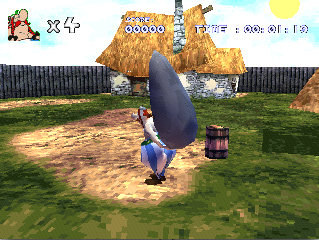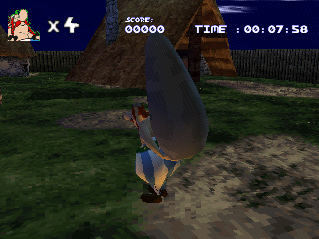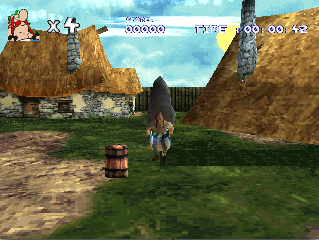Realtime optical motion capture
The main character of the game was an angel therefore most of the animation was difficult to capture:
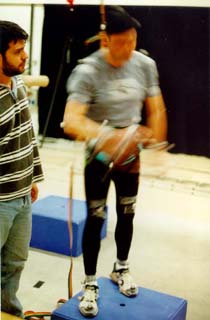
A great deal of imagination was involved and we used a lot of tricks to achieve the capture: for instance, when we captured the take off:
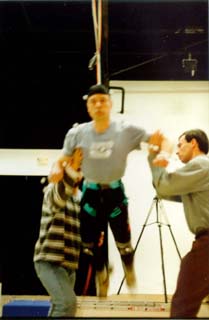
Eight optical infrared cameras system
You can see two out of eight infrared cameras that enable the system to capture the trajectory of the balls glued on the actor:
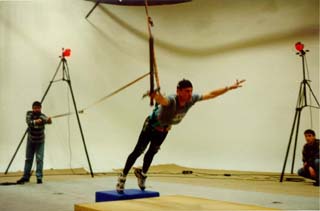

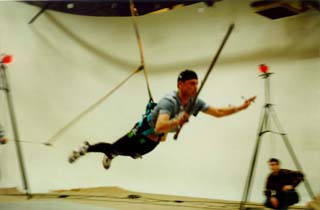
Acting
This character was supposed to float in the air. You can see me shaking a base on which the actor is sitting.

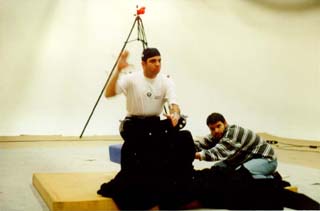
Fighting
The actor is ready for a strike.
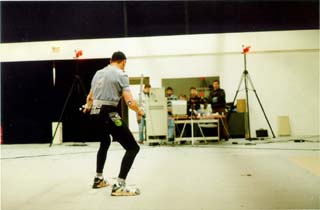
By the way, one can see on the rear, two cameras as well as the super computer starting capturing the movement.
